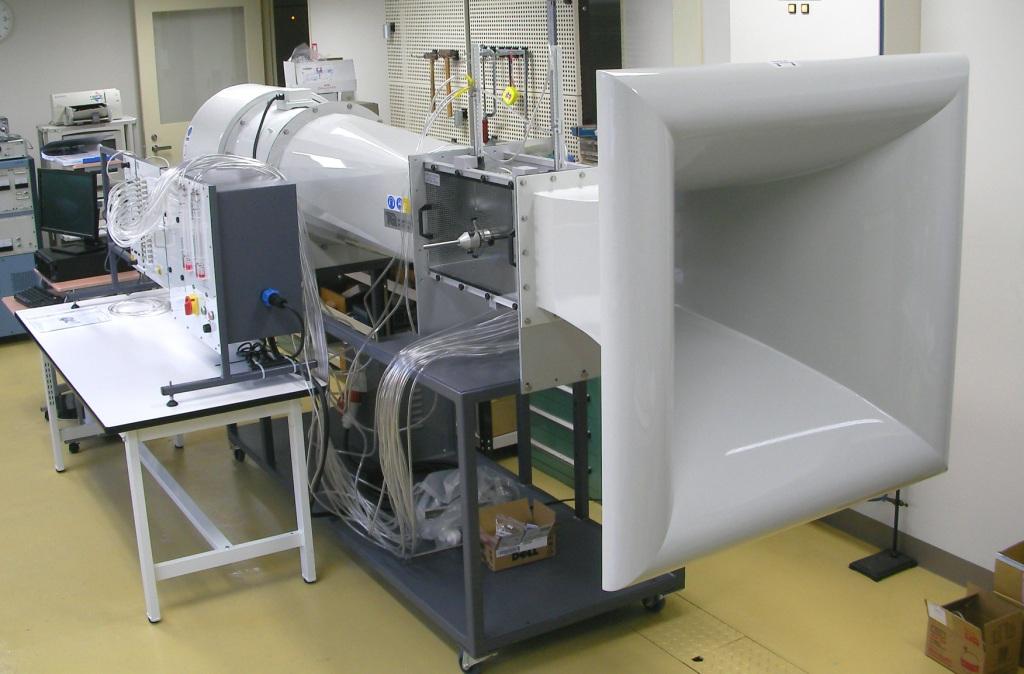Af100 Subsonic Wind Tunnel User Manual
Transonic tunnel. High subsonic wind tunnels (0.4 wind tunnels (0.75 subsonic wind tunnels. The highest speed is reached in the test section. The Mach number is approximately 1 with combined subsonic and supersonic flow regions.
- Af100 Subsonic Wind Tunnel User Manual Download
- Subsonic Wind Tunnel Experiment
- Af100 Subsonic Wind Tunnel User Manual Youtube
- Subsonic Wind Tunnel Design
- Af100 Subsonic Wind Tunnel User Manual Instructions
- Af100 Subsonic Wind Tunnel User Manual Pdf
- Af100 Subsonic Wind Tunnel User Manual Free
These are the sources and citations used to research Stress Concentration. This bibliography was generated on Cite This For Me on
AF100 subsonic wind tunnel user guide
2015 - Tecequipment
In-text: (AF100 subsonic wind tunnel user guide, 2015)
Your Bibliography: AF100 subsonic wind tunnel user guide. (2015). Tecequipment, p.3.
Budynas, R.
Shigley's mechanical engineering design
2013 - Mcgraw-Hill Education
In-text: (Budynas, 2013)
Your Bibliography: Budynas, R. (2013). Shigley's mechanical engineering design. Mcgraw-Hill Education, pp.1026-1027.
NI 9923 - Dimensional Drawing - National Instruments
2018
In-text: (Digital.ni.com, 2018)
Your Bibliography: Digital.ni.com. (2018). NI 9923 - Dimensional Drawing - National Instruments. [online] Available at: http://digital.ni.com/hardref.nsf/websearch/30C4F1E2538683F1862579BF00505774?OpenDocument&node=132120_US [Accessed 26 Apr. 2018].
Osborne Reynolds
2018
In-text: (En.wikipedia.org, 2018)
Your Bibliography: En.wikipedia.org. (2018). Osborne Reynolds. [online] Available at: https://en.wikipedia.org/wiki/Osborne_Reynolds [Accessed 28 Mar. 2018].
George, C.
Experimental Evaluation of Stress Concentration and Intensity Factors
2013 - Springer Verlag
In-text: (George, 2013)
Your Bibliography: George, C. (2013). Experimental Evaluation of Stress Concentration and Intensity Factors. Springer Verlag.
Gibson, L. and Andrews, E. W.
The influence of cracks, notches and holes on the tensile strength of cellular solids
2001 - Elsevier
In-text: (Gibson and Andrews, 2001)
Your Bibliography: Gibson, L. and Andrews, E. (2001). The influence of cracks, notches and holes on the tensile strength of cellular solids. Elsevier.
Boundary Layer
2018
In-text: (Grc.nasa.gov, 2018)
Your Bibliography: Grc.nasa.gov. (2018). Boundary Layer. [online] Available at: https://www.grc.nasa.gov/www/k-12/airplane/boundlay.html [Accessed 28 Mar. 2018].
Dynamics of Flight
2018
In-text: (Grc.nasa.gov, 2018)
Your Bibliography: Grc.nasa.gov. (2018). Dynamics of Flight. [online] Available at: https://www.grc.nasa.gov/WWW/k-12/UEET/StudentSite/dynamicsofflight.html#wings [Accessed 23 Feb. 2018].
Hearn, E. J.
Mechanics of materials
1997 - Butterworth-Heinemann - Oxford
In-text: (Hearn, 1997)
Your Bibliography: Hearn, E. (1997). Mechanics of materials. Oxford: Butterworth-Heinemann.
Anon
2018
In-text: (Me.utep.edu, 2018)
Your Bibliography: Me.utep.edu. (2018). [online] Available at: http://me.utep.edu/cmstewart/documents/ME3334/Lecture%207%20-%20Supplemental.pdf [Accessed 28 Mar. 2018].
Schetz, J. A. and Bowersox, R. D. W.
Boundary layer analysis
2012 - American Institute of Aeronautics and Astronautics - Reston, Va
In-text: (Schetz and Bowersox, 2012)
Your Bibliography: Schetz, J. and Bowersox, R. (2012). Boundary layer analysis. Reston, Va: American Institute of Aeronautics and Astronautics.
NI 9923 - National Instruments
2018
In-text: (Sine.ni.com, 2018)
Your Bibliography: Sine.ni.com. (2018). NI 9923 - National Instruments. [online] Available at: http://sine.ni.com/nips/cds/view/p/lang/en/nid/210164 [Accessed 26 Apr. 2018].
Young, W. C., Budynas, R. G. and Sadegh, A. M.
Roark's formulas for stress and strain
2012 - McGraw-Hill - London
In-text: (Young, Budynas and Sadegh, 2012)
Your Bibliography: Young, W., Budynas, R. and Sadegh, A. (2012). Roark's formulas for stress and strain. London: McGraw-Hill.
- 1Subsonic tunnel
Subsonic tunnel[edit]

Low-speed wind tunnels are used for operations at very low Mach number, with speeds in the test section up to 480 km/h (~ 134 m/s, M = 0.4) (Barlow, Rae, Pope; 1999). They may be of open-return type (also known as the Eiffel type, see figure), or closed-return flow (also known as the Prandtl type, see figure) with air moved by a propulsion system usually consisting of large axial fans that increase the dynamic pressure to overcome the viscous losses.
Open wind tunnel[edit]
The working principle is based on the continuity and Bernoulli's equation:
The continuity equation is given by:
Af100 Subsonic Wind Tunnel User Manual Download

The Bernoulli equation states:-
Putting Bernoulli into the continuity equation gives:
The contraction ratio of a windtunnel can now be calculated by:
Closed wind tunnel[edit]
In a return-flow wind tunnel the return duct must be properly designed to reduce the pressure losses and to ensure smooth flow in the test section.The compressible flow regime:Again with the continuity law, but now for isentropic flow gives:
Subsonic Wind Tunnel Experiment
The 1-D area-velocity is known as:
The minimal area A where M=1, also known as the sonic throat area is than given for a perfect gas:
Transonic tunnel[edit]
High subsonic wind tunnels (0.4 < M < 0.75) and transonic wind tunnels (0.75 < M < 1.2) are designed on the same principles as the subsonic wind tunnels. The highest speed is reached in the test section. The Mach number is approximately 1 with combined subsonic and supersonic flow regions. Testing at transonic speeds presents additional problems, mainly due to the reflection of the shock waves from the walls of the test section (see figure below or enlarge the thumb picture at the right). Therefore, perforated or slotted walls are required to reduce shock reflection from the walls. Since important viscous or inviscid interactions occur (such as shock waves or boundary layer interaction) both Mach and Reynolds number are important and must be properly simulated.Large-scale facilities and/or pressurized or cryogenic wind tunnels are used.
de Laval nozzle[edit]
Af100 Subsonic Wind Tunnel User Manual Youtube
With a sonic throat, the flow can be accelerated or slowed down. This follows from the 1D area–velocity equation. If an acceleration to supersonic flow is required, a convergent-divergent nozzle is required.Otherwise:
Subsonic Wind Tunnel Design
- Subsonic (M < 1) then converging
- Sonic throat (M = 1) where
- Supersonic (M >1 ) then diverging
Af100 Subsonic Wind Tunnel User Manual Instructions
Conclusion: The Mach number is controlled by the expansion ratio
See also[edit]
Af100 Subsonic Wind Tunnel User Manual Pdf
- National Aerospace Laboratory, Netherlands